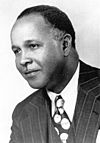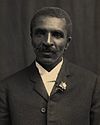Elephant joke facts for kids
An elephant joke is a joke cycle, almost always an absurd riddle or conundrum and often a sequence of such, that involves an elephant. Elephant jokes were a fad in the 1960s, with many people constructing large numbers of them according to a set formula. Sometimes they involve parodies or puns.
Examples of elephant jokes are:
- Q: Why did the elephant paint its toenails red?
- A: So it could hide in a cherry tree.
- Q: How can you tell that an elephant is in the bathtub with you?
- A: By the smell of peanuts on its breath.
- Q: Why does an elephant have round flat feet?
- A: So that it can walk across lily pads.
Structure
Elephant jokes rely upon absurdity and incongruity for their humor, and a contrast with the normal presumptions of knowledge about elephants. They rely upon absurdist reasoning such as that it would be the relatively incidental evidence regarding the smell of an elephant's breath or the presence of footprints in the butter that would allow for the detection of an elephant in one's bathtub or refrigerator. One key to the construction of an elephant joke is that the joke answers are somewhat appropriate if one merely overlooks the obvious absurdities inherent to the questions. If elephants were capable of climbing trees and if painting an elephant's toenails was an effective camouflage mechanism, then red would be the appropriate color for a cherry tree. If the common connotation that questions requesting the time are expected to be answered in terms of hours and minutes is ignored, then by the implied destruction of one's fence from being sat on by an elephant, it would be time to build a new fence. The appropriateness of the answer, when accounting for the absurd incongruences existing between the implied premise of the question and the normal assumptions said question invokes, distinguishes elephant jokes as jokes rather than nonsensical riddles.
As a riddle
Elephant jokes are often parodies of conventional children's riddles. Consider the following commonly recited child's riddle:
- Q: What is black and white and red all over?
- A: A newspaper.
Traditionally the challenge of solving this riddle relies on recognizing the ambiguity stemming from the riddle being generally shared aloud as opposed to in writing. Thus the appropriate homophone, "red" or "read", must be inferred. If "red" is assumed, then the problem arises regarding whether or not any object satisfying the condition of being "red all over" would necessarily preclude said object from also satisfying the requirement of being "black and white". However, if instead "read" is assumed, then there is no implied mutual exclusivity preventing a solution, conventionally a newspaper, from satisfying both required conditions. Compare the traditional riddle, which is solved by a well-known item that can be reasonably determined from the riddle, with the elephant joke parody:
- Q: What is black and white and red all over?
- A: An elephant dressed as a nun suffering from sunburn.
The absurdity of an elephant wearing a nun costume makes it nearly impossible for anyone not familiar with the punchline to independently think of the parody answer. Ignoring how unlikely one is to ever encounter an elephant dressed as a nun, then the answer is somewhat appropriate. A nun costume would likely be both "black and white" and a sunburn would cause an elephant to be, somewhat, "red all over". Humor arises from the irony of ignoring the expected answer for the outlandish, yet appropriate, elephant answer.
A turnabout to the "Blind men and an elephant" parable is a joke about four blind elephants who feel a human. The first reports that humans are flat, and the other three agree.
Series of elephant jokes
A series of elephant jokes can be constructed. Linking the appropriateness of each subsequent answer to the logically absurd structure of the preceding joke, the overall absurdity of a series can continuously compound. For example:
- Q: How do you shoot a blue elephant?
- A: With a blue elephant gun.
- Q: How do you shoot a yellow elephant?
- A: Have you ever seen a yellow elephant?
- Q: How do you shoot a red elephant?
- A: Hold his trunk shut until he turns blue, and then shoot him with the blue elephant gun.
- Q: How do you shoot a purple elephant?
- A: Paint him red, hold his trunk shut until he turns blue, and then shoot him with the blue elephant gun.
The absurdity of the first riddle's answer subverts the audience's initial expectations. The second and third riddles reinforce the expectation for this logically absurd structure. The final riddle concludes by again absurdly subverting the audience's expected framework. The humor for independent elephant jokes relies on absurd answers that ignore expectations, yet have a certain appropriateness. Here the absurdity is compounded when the appropriateness of the final riddle's answer is dependent upon undermining the logically absurd structure built from the preceding riddles.
One short example involves a displacement of a concept from one animal's features to those of an elephant, in terms of function:
- Q: Why do ducks have flat feet?
- A: To stamp out burning fires.
- Q: Why do elephants have flat feet?
- A: To stamp out burning ducks.
In another example:
- Q: How many elephants will fit into a Mini?
- A: Four: Two in the front, two in the back.
- Q: How can you fit five elephants into a Mini?
- A: Don't be silly; there isn't room for five elephants in a Mini.
- Q: Well, can you fit five elephants into a Volkswagen Beetle?
- A: Sure: Two in front, two in the back, one in the glove box, and pack the trunks in the boot (British English for "trunk").
- Q: How many giraffes will fit into a Mini?
- A: None. It's full of elephants.
- Q: How do you get two whales in a Mini?
- A: Along the M4 and across the Severn Bridge.
- Q: How do you know there is an elephant in your refrigerator?
- A: There are footprints in the butter.
- Q: How do you know there are two elephants in your refrigerator?
- A: You can hear giggling when you close the door.
- Q: How do you know there are three elephants in your refrigerator?
- A: You can't close the door.
- Q: How do you know there are four elephants in your refrigerator?
- A: There's an empty Mini parked outside.
Elephant jokes thus not only deliberately undermine the conventions of riddles, they even act to undermine themselves. This even extends to undermining the implied premise, expected by those that are familiar with elephant jokes, that an elephant joke is automatically illogical, or even involves elephants at all. For example:
- Q: What do elephants have that nothing else has?
- A: Baby elephants.
- Q: What is gray, has four legs, and a trunk?
- A: A mouse going on vacation.
- Q: What is brown, has four legs, and a trunk?
- A: A mouse coming back from vacation.
- Q: What has eight legs, two trunks, four eyes, and two tails?
- A: Two elephants.
There can even be an off-color tinge:
- Q: Why is an elephant big, grey and wrinkly?
- A: Because if it were small, white and smooth it would be an aspirin.
- Q: Why are golf balls small and white?
- A: Because if they were big and grey they would be elephants.
One time Gong Show act Mike Elephant is remembered for the following joke:
- Q: What's the difference between an elephant and a plum?
- A: Their color.
- Q: What did Tarzan say to Jane when he saw the elephants coming?
- A: Here come the elephants.
- Q: What did Jane say to Tarzan when she saw the elephants coming?
- A: Here come the plums; she was color blind.
Some may be regional:
- Q: How do you get a herd of Addo elephants out of your bedroom?
- A: Sit outside and scream like an orange. (In the early days of the park, surplus oranges were used to tempt Addo elephants to viewing sites for tourists.)
Elephant jokes can also use their inherent absurdity to point up the inherent absurdity in some current events. One such joke from the early 1960s refers to an incident in President Kennedy's on-again-off-again support for Cuban exiles' attempts to overthrow Fidel Castro:
- Q: How do you get 2,000 elephants to invade Cuba?
- A: Promise them air support!
 | Percy Lavon Julian |
 | Katherine Johnson |
 | George Washington Carver |
 | Annie Easley |

